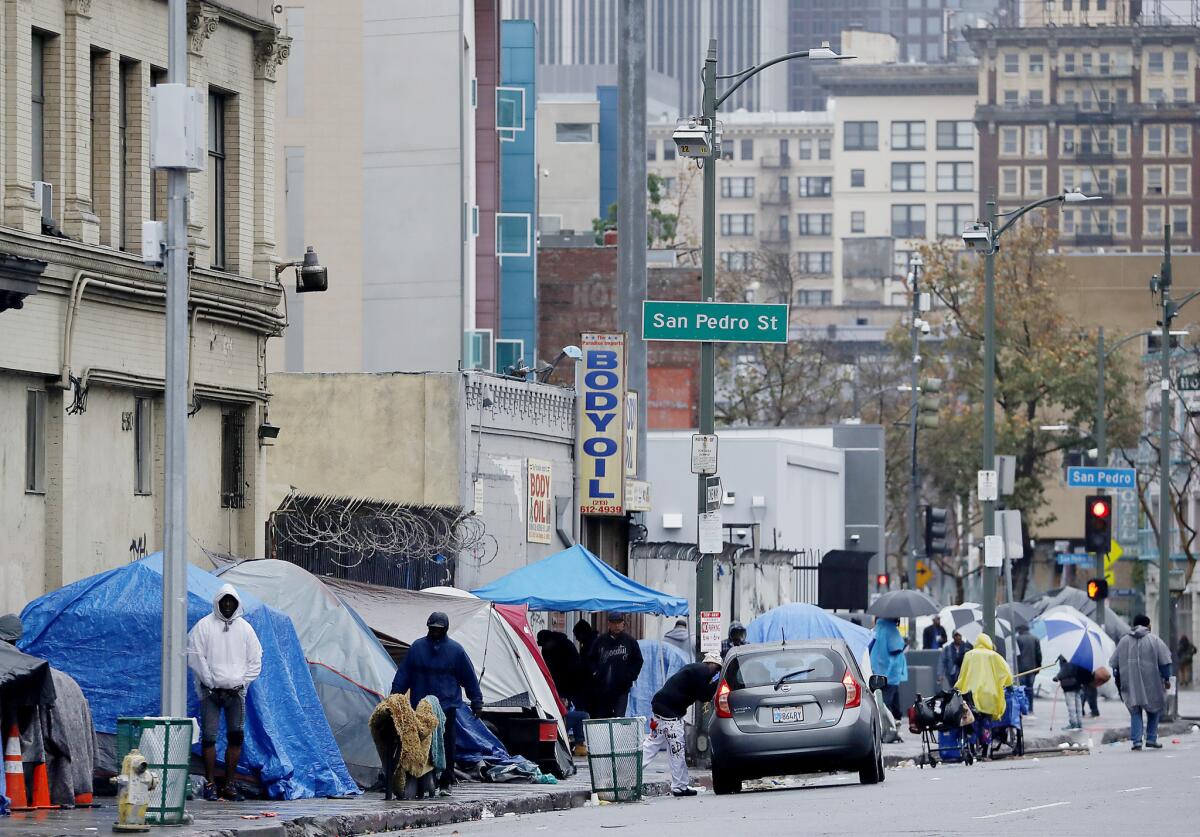Condos may be coming to skid row — but not for the homeless

- Share via
Apartments and condominiums for the middle class could be coming to skid row, under a rezoning plan unveiled Tuesday.
But skid row advocates warn the plan, currently in draft form, would displace many of the approximately 4,000 homeless people living in the blighted downtown area, or leave them in the streets.
The plan, more than a year in the making, still must withstand further review before going before the L.A. City Council for approval next year. It would convert parts of skid row and the adjoining fashion and arts districts from warehouse and industrial uses to residential.
If approved and implemented, 100,000 new housing units could be built by 2040, accommodating 176,000 new residents. Downtown currently has 76,000 residents, up from about 18,000 two decades ago.
In a concession to advocates who had accused the city of gentrifying skid row, development in the heart of the 50-block area, now home to tent cities, would be restricted to housing people, with annual earnings of $10,000 to $58,000.
But residential projects in the outer rings of skid row, bordering the fashion and arts districts and Little Tokyo, would have no income restrictions — although developers, under a new “community benefits program,” would be allowed to put up bigger buildings if they included units for poor people, or added parks, public squares or other amenities.
Craig Weber, principal planner for the city of Los Angeles, said the rezoning plan will encourage growth near transit and “housing opportunities for all.“
A May 2018 report by the California Housing Partnership Corp. said Los Angeles County needs 568,255 more affordable rental housing units to meet the current demand, but downtown housing development has tilted heavily to the high end.
Jerry Jones, policy director at the Inner City Law Center, a skid row legal services group, applauded closing part of skid row to market-rate housing. But he said the plan opens too much of the historic down-and-out neighborhood to the same luxury lofts and condominiums that blanket much of downtown.
“People are making a fortune building in downtown Los Angeles,” Jones said. “It’s not OK to make a plan that doesn’t address the needs of current neighborhoods.”
Jones said developers should be required to set aside as much as 25% of any new skid row housing development for poor people, and replace low-income housing lost to redevelopment on a one-to-one basis.
Weber said the rezoning plan does not dictate how much housing for poor people will be built — or where.
“The plan does not outline specifically where, how much and what types of affordable units will be built,” he said. “Rather, the plan seeks to expand the opportunity for affordable housing through policies, zoning and the community benefits program.”

More to Read
Sign up for Essential California
The most important California stories and recommendations in your inbox every morning.
You may occasionally receive promotional content from the Los Angeles Times.











